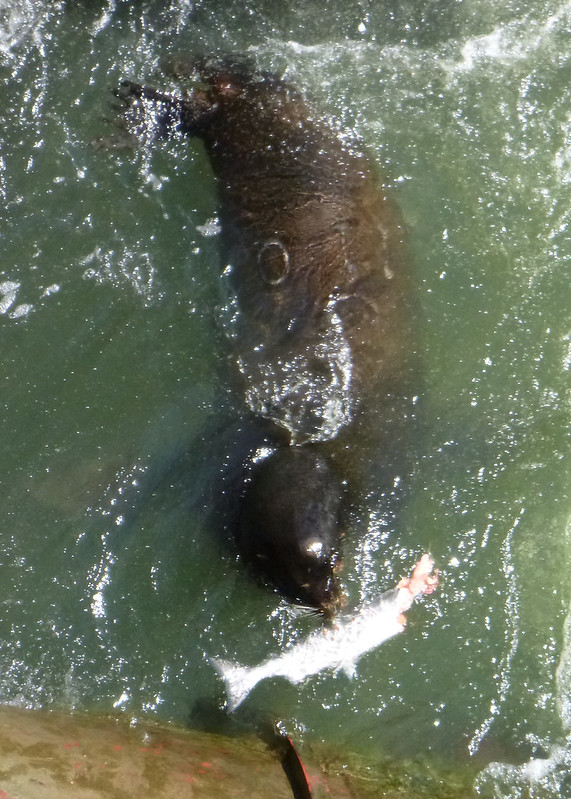
Federal Permit To Remove More Sea Lions In Columbia System Expected Friday
Federal go-ahead to lethally remove hundreds of sea lions in more of the Columbia and its salmon-spawning tributaries is expected to be issued tomorrow, according to a report, expanding ongoing culling to help reduce predation on ESA-listed runs.

The pending decision by the National Oceanic and Atmospheric Administration follows on a 2018 Congressionally approved change to the Marine Mammal Protection Act, last year’s application by Northwest states and tribes to take out more of the pinnipeds in the system, and a spring task force vote that “overwhelmingly recommended” going ahead with the program.

“We are supposed to make the call within 30 days of receiving the report from the Task Force, which was July 14. So you can anticipate a decision by August 14,” a federal spokesman told Northwest Sportsman late last month.
That vote by the 22-member task force was 16 in favor, two to deny, one abstaining and three not voting/were absent.

The news on the go-ahead was first reported this morning by The Seattle Times.
The focus will be on the Columbia from the I-205 bridge upstream to McNary Dam, and in all of the river’s tributaries from Buoy 10 upstream to McNary that host spawning gravel for threatened or endangered Chinook, coho, steelhead, chum and smelt.
(An initial Times map incorrectly shows only tribs between 205 and McNary are eligible for sea lion removals.)

State wildlife managers have previously only had permission to remove sea lions at specific pinchpoints, Bonneville Dam and Willamette Falls.
Between 2008 and 2019, a total of 219 Californias were removed from Bonneville, with 191 of those euthanized, an effort that WDFW says “saved 30,000 to 35,000 spring Chinook,” which are among key feedstocks for starving southern resident killer whales.
While improving ocean conditions may have played a role, after ODFW removed 33 in 2018 and 2019 at the falls, wild winter steelhead runs rebounded. With heavy predation before the agency was authorized to kill marine mammals there, it had been estimated that there was an 89 percent chance that one of the watershed’s stocks would go extinct.
But the work also requires no small amount of money and to that end WDFW is expected to ask the state legislature for $2.2 million for marine mammal management, including for pinnipeds in the Columbia, when lawmakers convene next year.
Nor is it a silver bullet that will make salmon, steelhead and smelt runs magically take off again. The Columbia and its fish habitats have been highly altered, and yet to ignore and not address a source of predation in a population that is considered recovered would be folly.



Task force members who voted in favor of approving the permit included representatives from ODFW, IDFG, WDFW, Columbia River Inter-Tribal Fish Commission, Confederated Tribes and Bands of the Yakama Nation, Confederated Tribes of the Umatilla Reservation, Confederated Tribes of the Grand Ronde Community of Oregon, NOAA Marine Mammal Laboratory, Northwest Sportfishing Industry Association, Northwest Guides and Anglers Association, Oregon Zoo, Seattle Aquarium, International Marine Animals Trainers Association and The Wildlife Society.
Those against included reps from The Humane Society and International Fund for Animal Welfare.
Editor’s note: The initial version of this story incorrectly the number of sea lions that could be potentially removed. The total is up to 540 California sea lions and 176 Steller sea lions over five years.
